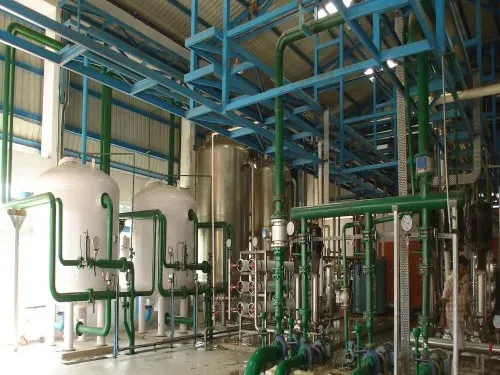Zero Liquid Discharge Plant for Pharmaceutical Industry
A Zero Liquid Discharge (ZLD) plant for the pharmaceutical industry is designed to treat and manage the wastewater generated during pharmaceutical manufacturing processes while achieving the goal of zero liquid discharge into the environment. The pharmaceutical industry produces a variety of wastewater streams containing organic and inorganic contaminants, solvents, and potentially hazardous chemicals. Implementing a ZLD system helps pharmaceutical manufacturers meet stringent environmental regulations, reduce their environmental impact, and potentially recover valuable resources. Here’s an overview of how a ZLD plant is applied in the pharmaceutical industry:
Wastewater Characterization: To design an effective ZLD system, it is essential to thoroughly analyze and characterize the pharmaceutical industry’s wastewater streams. This includes identifying the types of chemicals, solvents, pH levels, and other relevant parameters.
Wastewater Collection and Segregation: Proper collection, segregation, and containment of different wastewater streams are crucial to prevent mixing of incompatible chemicals and ensure efficient treatment.
Pretreatment: Initial pretreatment steps may involve the removal of coarse solids, oil, and grease from the wastewater. These steps help prevent clogging and protect downstream equipment.
Chemical Recovery: Depending on the specific processes used in pharmaceutical manufacturing, there may be opportunities to recover and reuse certain chemicals or solvents. Recovery processes can be integrated into the ZLD system to reduce chemical costs.
Biological Treatment: If the wastewater contains organic contaminants, biological treatment processes such as aerobic or anaerobic digestion may be used to break down biodegradable substances.
Advanced Filtration: ZLD systems in the pharmaceutical industry often incorporate advanced filtration technologies, such as ultrafiltration (UF) and reverse osmosis (RO), to remove dissolved solids, contaminants, and solvents from the wastewater.
Evaporation and Crystallization: The concentrated brine or reject water from the RO system is subjected to evaporation and crystallization processes. These steps remove the remaining water content, leaving behind solid salts for disposal or potential recovery.
Brine Management: Proper management of the concentrated brine or solid waste is crucial. Some chemicals or solvents can be recovered from the brine, and the remaining solid waste must be handled and disposed of according to local regulations.
Heat Recovery: ZLD systems can be energy-intensive. Implementing heat recovery systems can help improve energy efficiency and reduce operational costs.
Monitoring and Control: Continuous monitoring of water quality, flow rates, and system performance is essential to ensure efficient operation and compliance with environmental regulations.
Compliance: The pharmaceutical industry is subject to stringent environmental regulations governing wastewater discharge. Compliance with local, state, and federal regulations is essential when operating a ZLD system.
Resource Conservation: Implementing ZLD not only helps with environmental compliance but also contributes to resource conservation by minimizing water consumption and potentially recovering valuable chemicals or solvents.
Implementing a ZLD plant for pharmaceutical industry requires careful planning, engineering expertise, and ongoing maintenance. It not only helps pharmaceutical manufacturers meet regulatory requirements but also demonstrates a commitment to sustainability and responsible resource management by minimizing the environmental impact of pharmaceutical production. Additionally, recovering and reusing valuable chemicals or solvents can offer economic benefits to pharmaceutical companies

